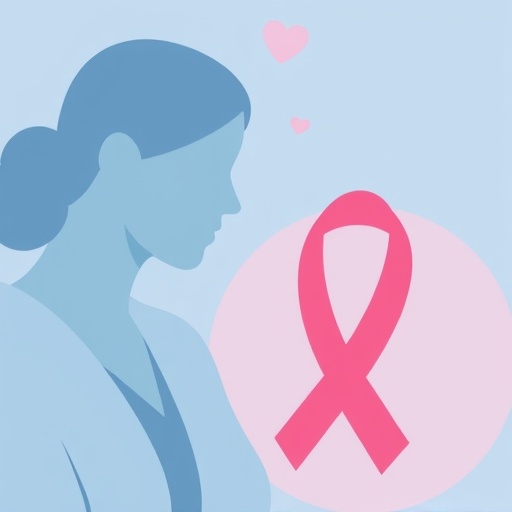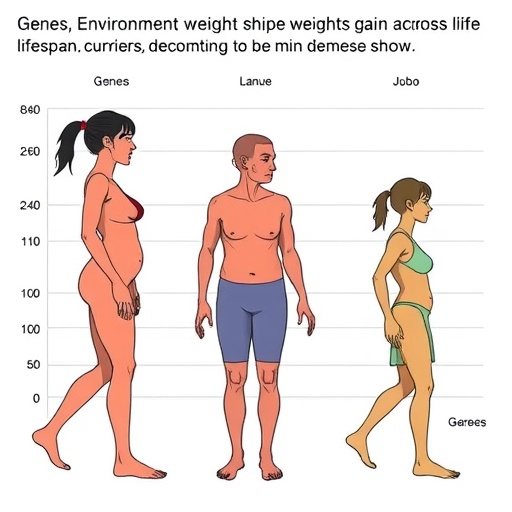In an era where healthcare disparities continue to be a pressing challenge, a recent study has emerged highlighting the critical role of patient navigation in optimizing treatment pathways for breast cancer patients. Conducted by Shash, Alaa, Maher, and their colleagues, this retrospective cohort study takes a deep dive into the impact of timely anti-HER2 therapy in early-stage breast cancer, particularly within the context of low-middle income countries. The findings are not only timely but serve as a potential blueprint for enhancing cancer care delivery in regions that often lack the resources and infrastructure seen in higher-income settings.
The backdrop of this research is set against a backdrop of alarming statistics that reveal significant variations in breast cancer outcomes based on geographic and socioeconomic factors. In low-middle income countries, access to effective treatments like HER2-targeted therapies is frequently hampered by a myriad of obstacles, including financial constraints, insufficient healthcare infrastructure, and inadequate patient education. This creates a perfect storm of challenges that can lead to delays in diagnosis and treatment, ultimately impacting patient prognosis and overall survival rates.
One of the standout features of the study is its focus on patient navigation – a strategy that aims to guide patients through the complexities of the healthcare system. Patient navigators work closely with individuals to coordinate care, facilitate communication with healthcare providers, and ensure that patients receive timely access to necessary treatments. By employing this model, the researchers sought to mitigate some of the barriers that often stand in the way of effective cancer treatment.
In examining the cohort of breast cancer patients included in the study, the authors employed rigorous statistical analyses to assess treatment timelines and outcomes. They tracked the timing of anti-HER2 therapies administered and documented key milestones in the treatment journey, highlighting any delays that occurred. Their findings indicated that with the introduction of patient navigation services, the time from diagnosis to treatment initiation significantly decreased, showcasing the transformative potential of this approach.
Moreover, the implications of timely treatment with anti-HER2 therapy cannot be underestimated. Research has consistently shown that early administration of such therapies is associated with improved outcomes, including higher rates of disease-free survival. Hence, the study’s emphasis on reducing delay in treatment initiation is crucial not just for facilitating immediate care but also for promoting long-term health prospects among patients facing this aggressive disease.
The study also sheds light on the specific challenges faced by patients in lower-income settings, where the burden of breast cancer can be exacerbated by social determinants of health. Factors such as educational attainment, financial stability, and even cultural perceptions about cancer can influence a patient’s ability to seek care. By addressing these elements within their patient navigation framework, the researchers highlighted the necessity of a holistic approach to cancer treatment that extends beyond mere medical intervention.
Another significant aspect of this research is its emphasis on real-world application; the insights gleaned from the study are not purely academic but offer practical guidance that can be implemented in healthcare systems worldwide. The authors advocate for strengthening patient support services in tandem with the provision of treatment options, suggesting that investments in navigation services could yield measurable improvements in patient outcomes and system efficiencies.
In addition, the study’s conclusions urge policymakers and healthcare administrators to consider the value of patient navigation not just as a luxury, but as a fundamental aspect of effective cancer care delivery. By recognizing and investing in navigational resources, healthcare systems can begin to dismantle the barriers that prevent timely access to critical therapies, ultimately leading to better health equity.
The findings from Shash and colleagues are poised to stir discussions among healthcare professionals, advocates, and policymakers about how best to structure cancer care in resource-limited settings. The study presents a compelling case for the integration of navigational services into standard oncology practice as a means to optimize treatment delivery and promote patient-centered care.
Furthermore, these results underscore an essential shift in how we can conceptualize patient care. Rather than viewing individuals solely as passive recipients of treatment, the study reaffirms the importance of engagement and empowerment in the patient journey. By involving patients more actively in their care, healthcare providers can foster a more robust support network that contributes to both emotional and clinical resilience.
As the ongoing battle against breast cancer persists, the insights drawn from this study serve to remind us that innovative solutions are necessary to bridge the gaps in care. While the challenges are immense, approaches like patient navigation can provide a guiding light for patients navigating the complexities of the healthcare system.
In conclusion, as we reflect on the implications of this research, it is clear that enhancing the patient experience through navigation services can lead to tangible improvements in treatment timelines and outcomes. The need for swift, effective action is critical, especially in the context of early-stage breast cancer, where every moment counts. This study not only charts a path for future research but generates momentum for rethinking how we care for the most vulnerable patient populations worldwide.
Adopting the findings from Shash et al.’s research could inspire widespread changes and encourage further studies to validate and expand upon their conclusions. The hope is to see a world where every patient, regardless of their socio-economic status, can access timely and effective treatments that can significantly alter the course of their cancer journey.
By leveraging the power of patient navigation, healthcare systems can work towards dismantling barriers and ultimately contribute to improved survival rates and a strengthened overall quality of life for those affected by breast cancer.
Subject of Research: The impact of patient navigation on timely anti-HER2 therapy for early breast cancer in low-middle income countries.
Article Title: Streamlining care through patient navigation: a retrospective cohort study of timely anti-HER2 therapy in early breast cancer in a low-middle income country.
Article References: Shash, E., Alaa, F., Maher, E. et al. Streamlining care through patient navigation: a retrospective cohort study of timely anti-HER2 therapy in early breast cancer in a low-middle income country. BMC Health Serv Res 25, 1454 (2025). https://doi.org/10.1186/s12913-025-13606-8
Image Credits: AI Generated
DOI: https://doi.org/10.1186/s12913-025-13606-8
Keywords: Patient Navigation, Breast Cancer, Anti-HER2 Therapy, Healthcare Disparities, Low-Middle Income Countries, Treatment Timelines.
Tags: anti-HER2 therapy effectivenessbreast cancer treatment pathwaysdisparities in cancer careenhancing early-stage breast cancer caregeographic variations in cancer outcomesimproving cancer care deliverylow-middle income countries healthcare challengesoptimizing treatment for underserved populationspatient education in cancer treatmentpatient navigation in healthcaresocioeconomic factors in healthcare accesstimely diagnosis and treatment





